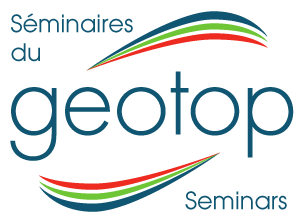Dr Claude Hillaire-Marcel - Recent climate history of the Arctic Ocean (from a U-series isotope perspective)
Claude Hillaire-Marcel, professeur émérite, Geotop-UQAM
Mardi 21 janvier 2025 à 12h30 - Tuesday, January 21, 2025 at 12:30 pm
Résumé / abstract:
Merging the Arctic Ocean paleoclimate history within the Earth's global climate system remains a challenge. Under both permanent and seasonally-opened sea-ice covers, marine sedimentary recordings present anomalies, ranging from hiatuses under thick ice-shelf covers, to winnowed and mixed sequences generated by deep density-driven currents under more open sea-ice conditions. Moreover, short-lived, early or late-glacial events may have led to the deposition of relatively thick layers some possibly containing reworked material. Earlier tentative chronologies based on bio/ecostratigraphic arguments have been recently invalidated, requiring to revisit the chronostratigraphy of many sequences. Nevertheless, U-series-based studies provide a way to put radiometric constraints on the recordings of the late Quaternary interglacials/interstadials, marked by peaking 230Th- and 231Pa-excesses. In combination with a re-interpretation of paleomagnetic and microfaunal records, a tentative chronostratigraphy of the late Pleistocene can be proposed. It leads to revise the conclusions of many papers based on the invalidated bio/ecostratigraphy that were published since 2000.

Recent climate history of the Arctic Ocean (from a U-series isotope perspective)
Ajouter au calendrier
2025-01-21 12:30:00
2025-06-03 11:13:38
Dr Claude Hillaire-Marcel - Recent climate history of the Arctic Ocean (from a U-series isotope perspective)
Merging the Arctic Ocean paleoclimate history within the Earth's global climate system remains a challenge. Under both permanent and seasonally-opened sea-ice covers, marine sedimentary recordings present anomalies, ranging from hiatuses under thick ice-shelf covers, to winnowed and mixed sequences generated by deep density-driven currents under more open sea-ice conditions. Moreover, short-lived, early or late-glacial events may have led to the deposition of relatively thick layers some possibly containing reworked material. Earlier tentative chronologies based on bio/ecostratigraphic arguments have been recently invalidated, requiring to revisit the chronostratigraphy of many sequences. Nevertheless, U-series-based studies provide a way to put radiometric constraints on the recordings of the late Quaternary interglacials/interstadials, marked by peaking 230Th- and 231Pa-excesses. In combination with a re-interpretation of paleomagnetic and microfaunal records, a tentative chronostratigraphy of the late Pleistocene can be proposed. It leads to revise the conclusions of many papers based on the invalidated bio/ecostratigraphy that were published since 2000.
Geotop
admin@example.com
America/New_York
public



